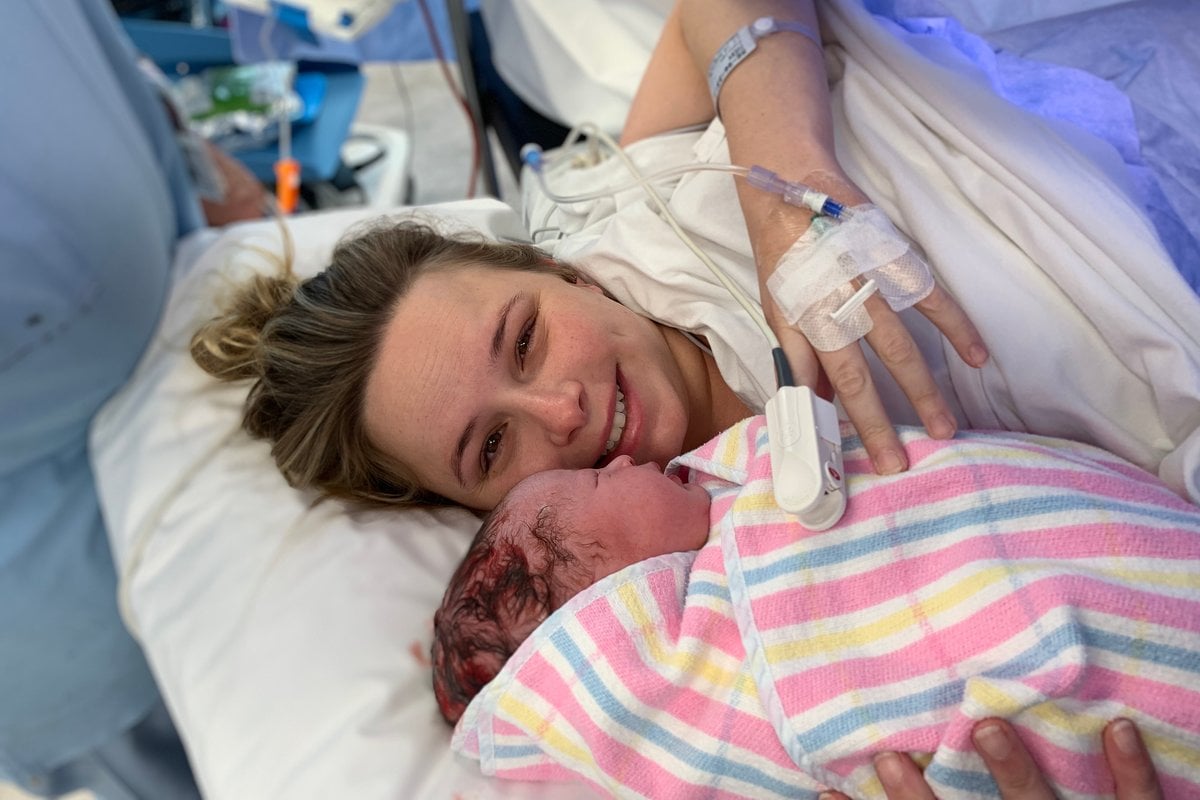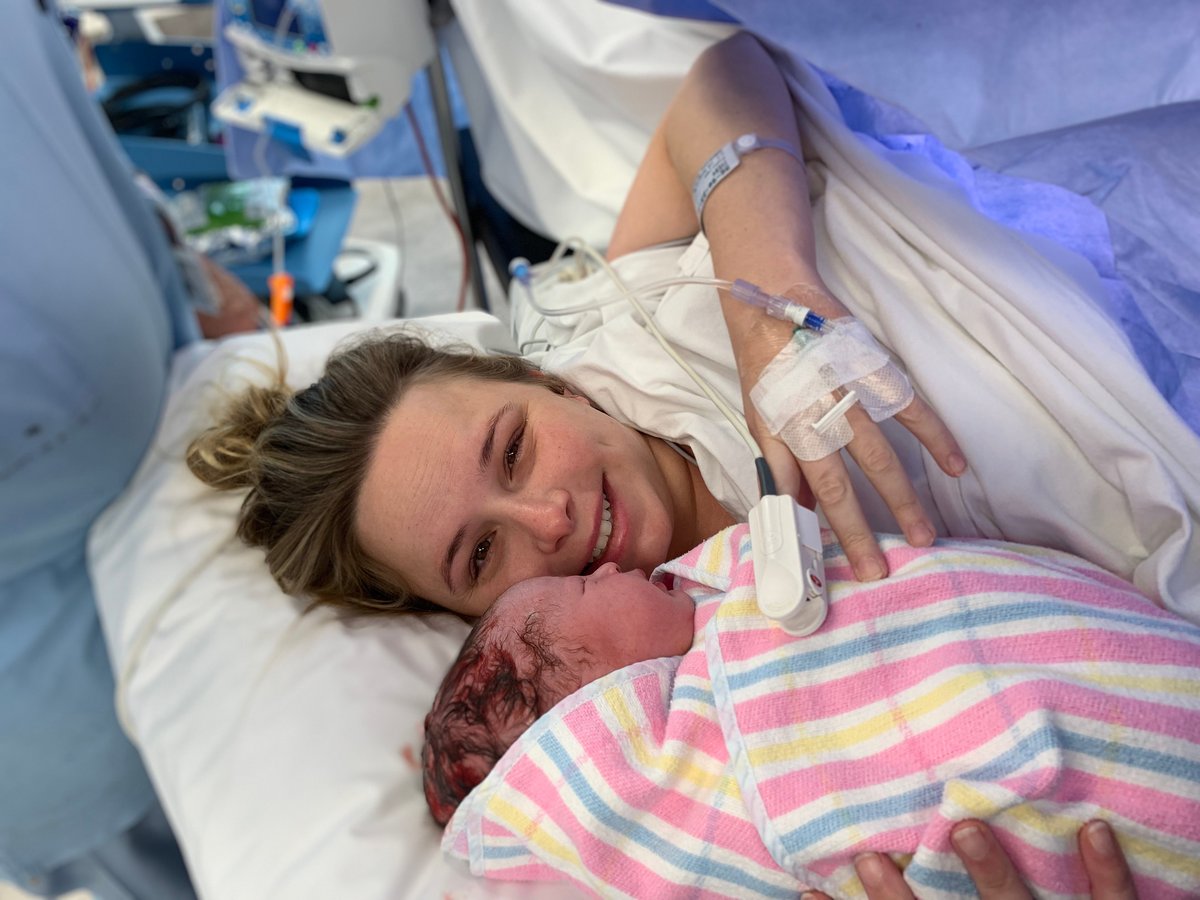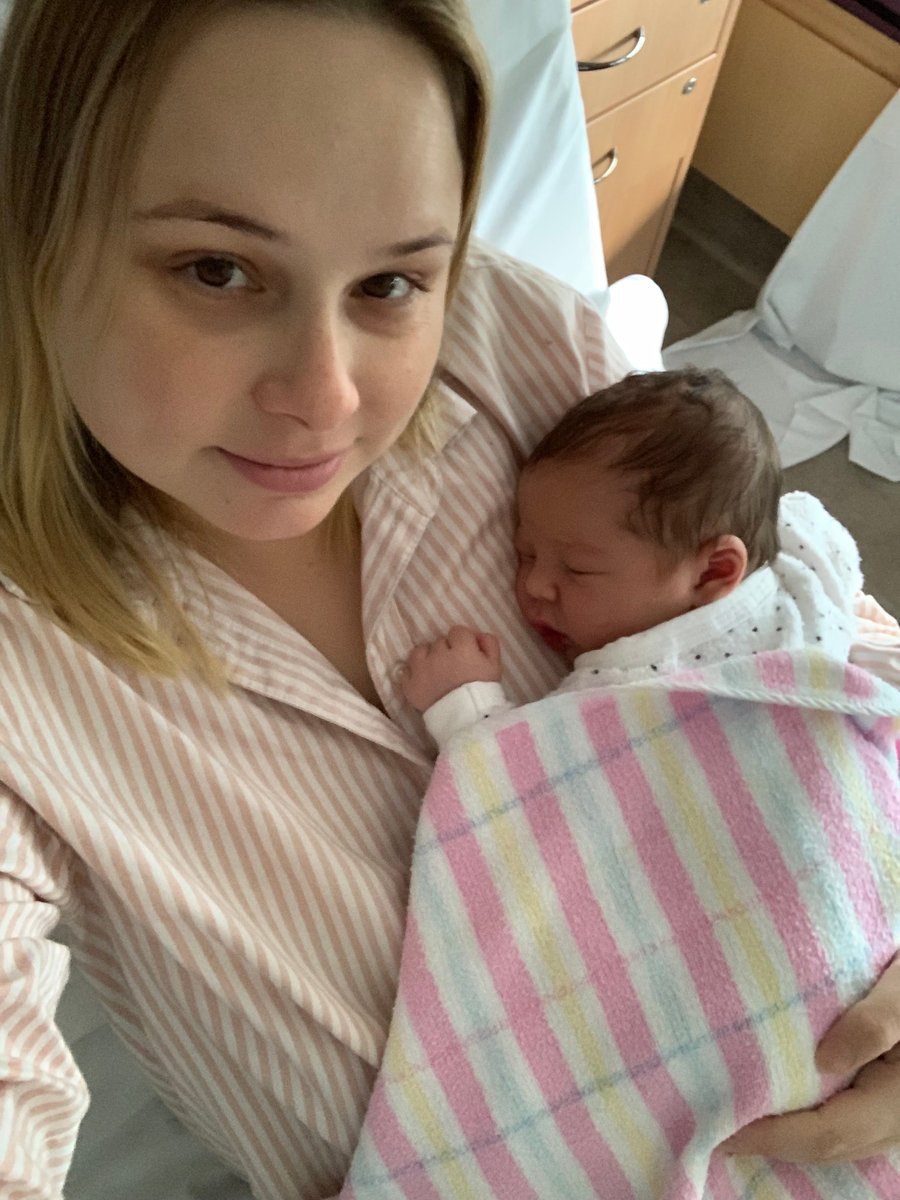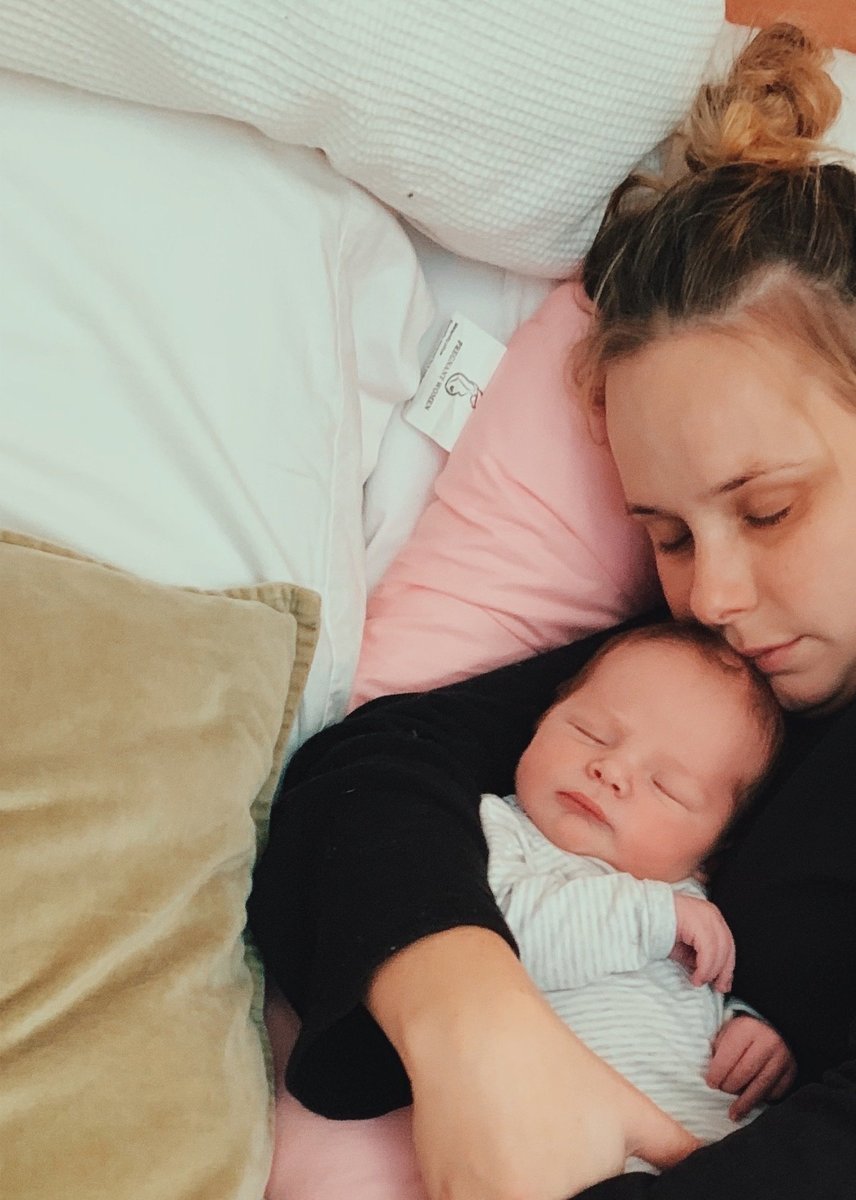
I’m a planner. The kind of girl who Googles the ending of the movie so I can watch it in peace.
I’ve ruined every surprise party ever planned for me, and when it comes to my job, I try to set realistic goals and expectations to help predict a result.
So naturally, when it came to childbirth, I was ready to get planning for labour.
A water birth sounds like me, I thought, so I set out to educate myself and gather all relevant information.
Watch: Questions About childbirth, answered. Post continues below.
I did every birthing class possible and I read all the birthing books.
I didn’t just go into the birthing suite with a laminated water birth plan (I thought it was coming into the water with me); I went into the birthing suite with a manilla folder of 18 pages of material I could pull from that I had collected from my courses and books.
It included visuals of flowers (I think they were meant to represent opening up?), breathing techniques, even a guided meditation my partner could read to me.
So… did I open that folder once throughout labour?





Top Comments